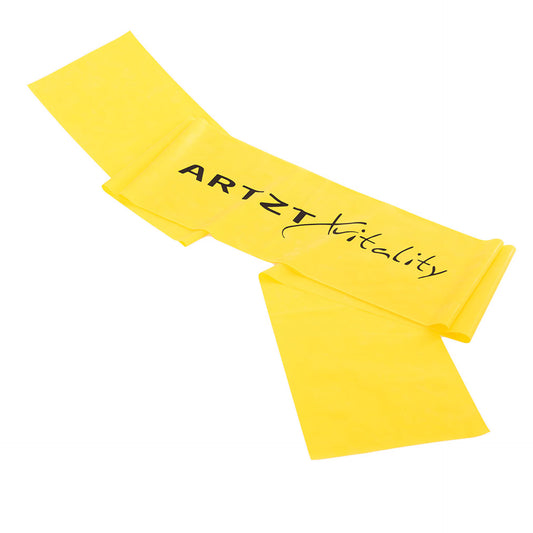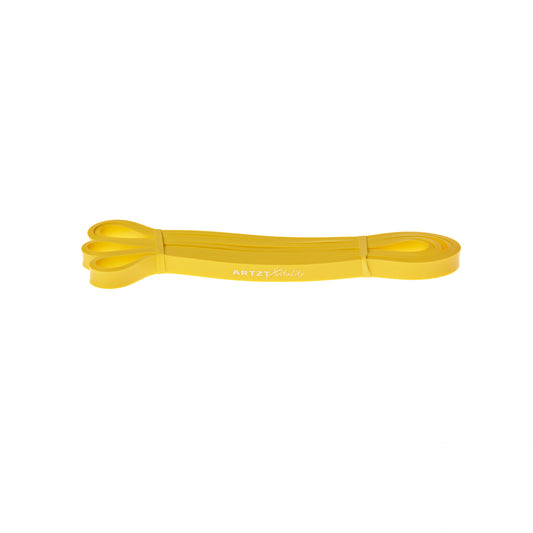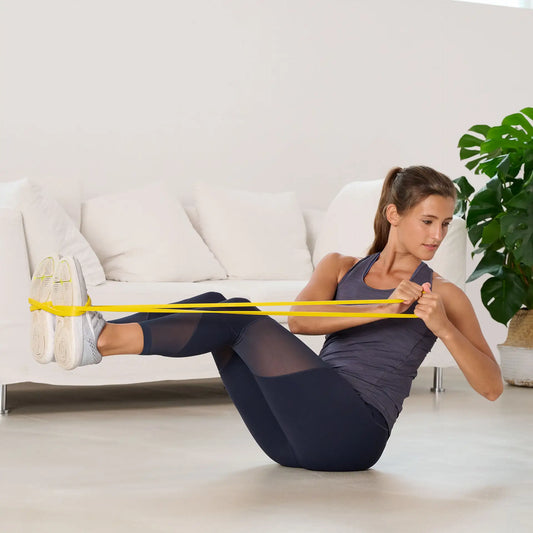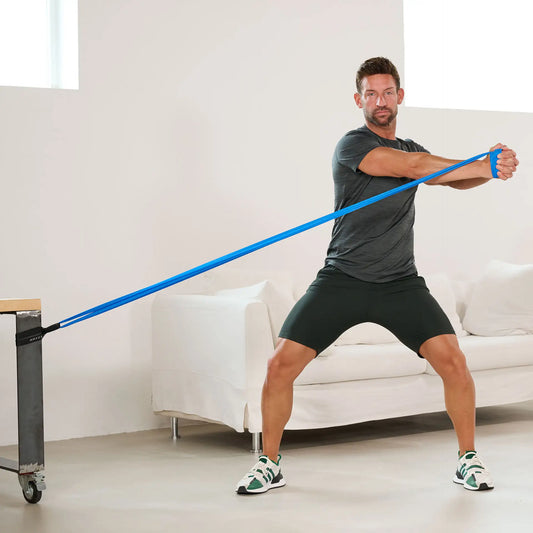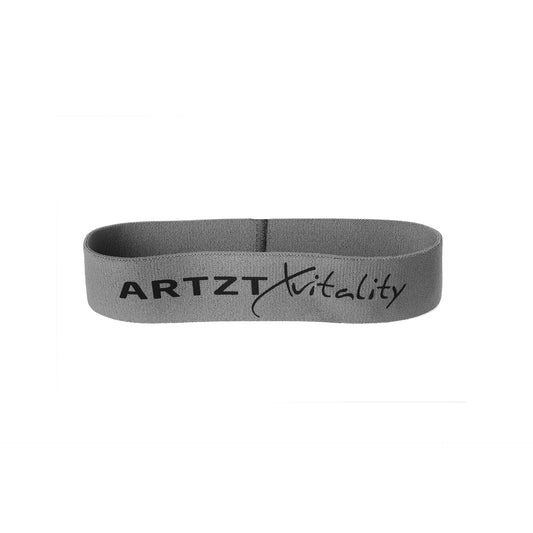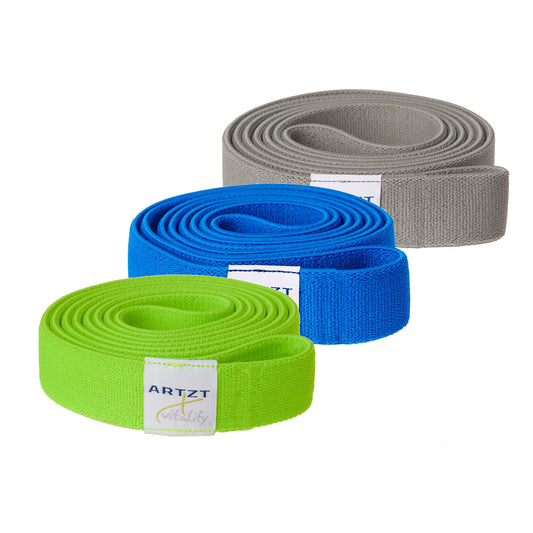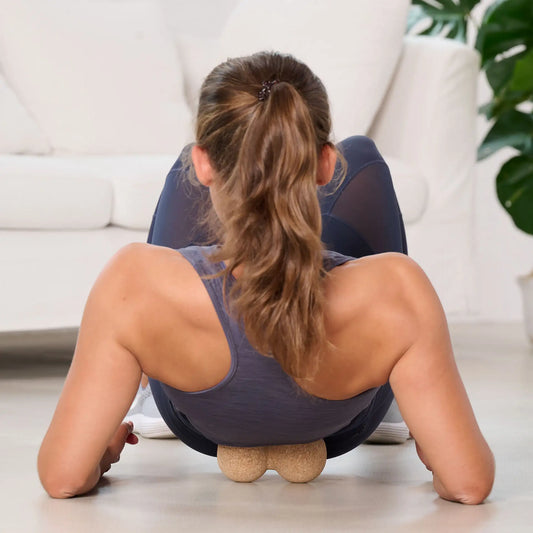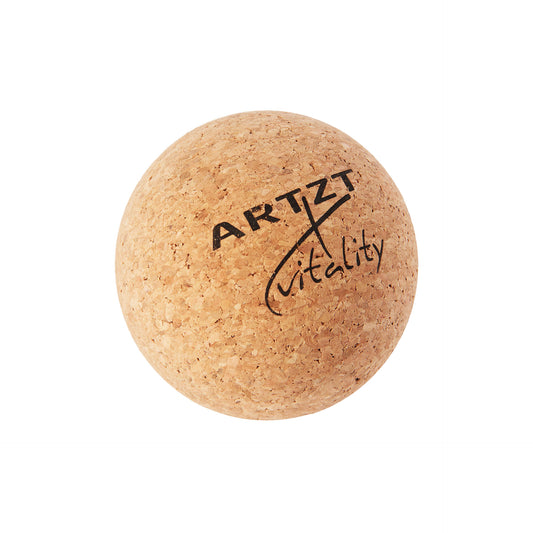
Herniated disc - symptoms and treatment
Share
Reading time: 5 min
Acute pain in the area of the spine, which is accompanied by significant restriction of movement and discomfort, should be examined by a doctor as soon as possible. Because it could be a herniated disc.
Here you can find out what causes a slipped disc can have, how you can recognize it and what you can do about it.
Contents
What do the intervertebral discs do?What is a herniated disc?
Causes and triggers of a herniated disc
What are the symptoms of a herniated disc?
How do I recognize a herniated disc?
How do I get rid of a herniated disc without surgery?
Sport with a herniated disc: what can I do - and what not?
What do the intervertebral discs do?
The human spine is made up of seven cervical vertebrae (cervical vertebrae), twelve thoracic vertebrae (thoracic vertebrae), five lumbar vertebrae (lumbar vertebrae), the sacrum (os sacrum) and the coccyx (os coccygis) and, together with the spinal ligaments and muscles, the holding and carrying work of the entire body.
This combination of bones, fixed and flexible support structures enables us to sit securely and upright, to move confidently in all levels and to walk in an upright posture without any worries. The spine with all its structures is therefore the center of all movement, but also the center for the stability of the head and torso. Without them we would slump, fall over and be unable to move while sitting or standing.
In the course of a lifetime, it is enormously challenged and exposed to heavy loads. In particular, the intervertebral discs (discus vertebrales) are strained. These are placed between each pair of vertebral bodies, except for the atlas (first vertebra) and axis (second vertebral body), where they line the entire intervertebral space and serve as "shock absorbers". They consist of an outer fibrous ring of connective tissue, the anulus fibrosus, which contains a gelatinous core, the nucleus pulposus.
>> Reading tip: Back pain - you need to know that
What is a herniated disc?
Due to constant stress and the natural aging process, the outer fiber ring loses strength and elasticity. This can lead to a bulging of the intervertebral disc, a protrusion. That is, the nucleus pulposus pushes the relaxed anulus fibrosus beyond the edge of the vertebral body.
As long as the displaced annulus is intact and elastic, the patient does not need to worry at first. In some cases, however, such a protrusion is a possible preliminary stage to a herniated disc, the prolapse. Because if the fibrous ring is increasingly loaded incorrectly, cracks can develop and the gelatinous core can escape unhindered into the adjacent spinal canal (vertebral canal). There it then presses more or less strongly on the surrounding neural structures.
This irritation of the nerve structures can cause pain, discomfort or, in the worst case, even paralysis.
Causes and triggers of a herniated disc
Possible causes of a herniated disc are, on the one hand, poor posture that cause an imbalance in the paravertebral muscles. These imbalances are often exacerbated by the progressive lack of exercise, which is often work-related. On the other hand, a genetically determined weakness of the connective tissue or malpositions of the musculoskeletal system (e.g. significant difference in leg length, pelvic tilt or scoliosis) can also promote the development of a prolapse.
In many cases, the intervertebral disc is so pre-damaged as a result of years of overloading that just a small “wrong” movement is enough to break the camel’s back. Small movements such as a slight turn to pass something on, or bending over to pick up a pen lying on the floor, can then trigger a herniated disc with sudden shooting pain, usually in the area of the lumbar spine.
What are the symptoms of a herniated disc?
A prolapse can occur anywhere in the spine. Accordingly, different symptoms occur depending on the location and severity of the lesion. In the area of the cervical spine, a herniated disc often causes headaches (sometimes to the point of migraines), numbness, abnormal sensations (paresthesia) and reduced strength in the arms, hands or shoulder-neck area and dizzy spells.
In the case of a prolapse at the level of the thoracic spine, severe pain in the entire chest area is possible, which is confused with heart pain and can trigger panicky feelings in the patient.
If an intervertebral disc in the lumbar spine is affected, pain often occurs, which can spread through the buttocks and thighs to the lower leg and foot. Here, too, numbness, discomfort and reduced strength in the legs can occur, which often result in unsteady gait and an increased risk of falling.
If a nerve is more severely affected or its function is completely switched off by the prolapse and the muscle tension that is often associated with it, this can increasingly lead to paraesthesia and even paralysis of the entire lower extremity. In some cases, disorders of the bladder function and bowel function are possible, incontinence is unavoidable, but can be treated as far as possible if the lesion is repaired.
An operation for a herniated disc is almost unavoidable in such serious disease progressions. Because the longer the nerve is not adequately supplied, the lower the chance of a full recovery.
How do I recognize a herniated disc?
If the patient consults a doctor because of pain and movement restrictions in the area of the spine, examinations such as X-rays, MRT or CT of the affected area are arranged. If the doctor treating you then recognizes a prolapse from the images taken, he makes the clear diagnosis of a herniated disc.
However, it cannot be clearly determined from the images what was ultimately the cause of the rupture. For this reason, a comprehensive initial anamnesis is made in physiotherapy before each treatment, in which questions are asked about habits, sporting or inactive leisure activities, job and sometimes also the social environment. There is also a thorough inspection of the entire body in order to identify possible deficits that could have favored a prolapse with its symptoms.
How do I get rid of a herniated disc without surgery?
Various methods are used in physiotherapy to treat a herniated disc. The focus here is on the one hand on reducing pain and discomfort and on the other hand reducing movement restrictions. are in the acute phase Heat packs, electrotherapy, step positioning (if the patient finds it comfortable) and Quiet indicated.
Further, gentle and gentle techniques from the manual therapy promote a sliding back of the displaced fiber ring and thus reduce the discomfort in the extremities. Likewise, light massage to detonate tight muscles - a response to protect the area of the herniated disc - can provide pain relief and relaxation.
If the patient is largely pain-free, light therapeutic exercises can be started. Isometric tension exercises for the targeted development of the paravertebral muscles, but also the abdominal muscles, are essential here.
Gradually, the exercises are increased and practiced from different starting positions - up to activities from everyday life. A training plan can also be worked out with the physiotherapist, which individually addresses the causes of the herniated disc, shows ways out of back-unfriendly habits and should be continued beyond the therapy period. Because only regular muscle strengthening can counteract the risk of another prolapse or at least minimize it.
They are also very suitable for this back training courses under expert and professional guidance, who impart the necessary knowledge with numerous exercises and additional tips about "proper carrying and lifting" as well as correct ergonomics at the workplace and give suggestions for breaking old and ill-causing habits.
How long the symptoms last varies greatly from patient to patient. Every person has an individual healing process, every body reacts differently to the existing situation. Among other things, the general physical condition and constitution, the age, the severity of the symptoms and - very important - the motivation of the patient are decisive here. Without the patient's help, the healing process can sometimes be delayed and the symptoms may not subside as quickly.
>> Reading tip: Strong back - 11 exercises with the fitness band
Sport with a herniated disc: what can I do - and what not?
Not every sport is popular after a herniated disc. Swimming, Nordic walking, Pilates, dancing and general gymnastics are particularly gentle and popular. If a patient has previously practiced a sport that could put more strain on the back, it is advisable to discuss this with the treating doctor and physiotherapist before returning to sport.

